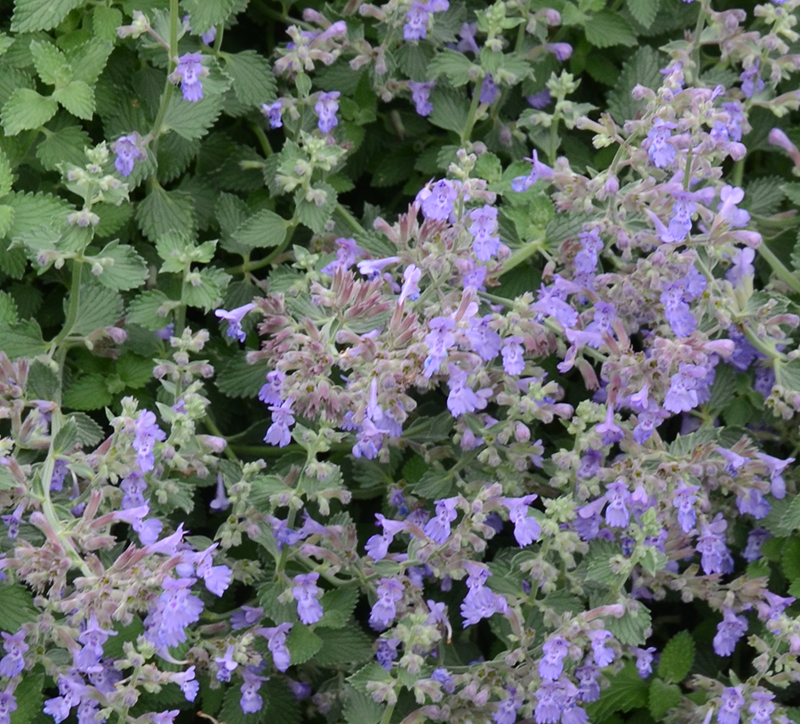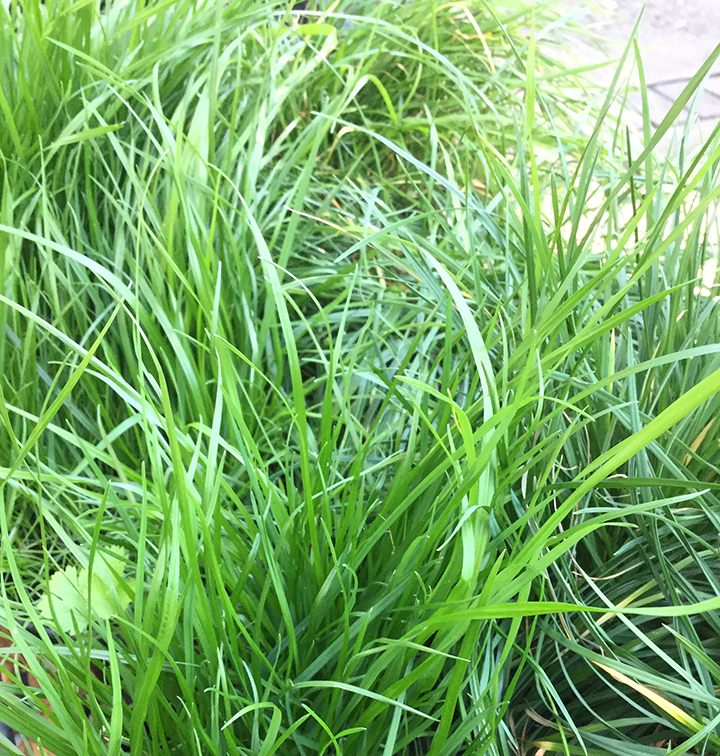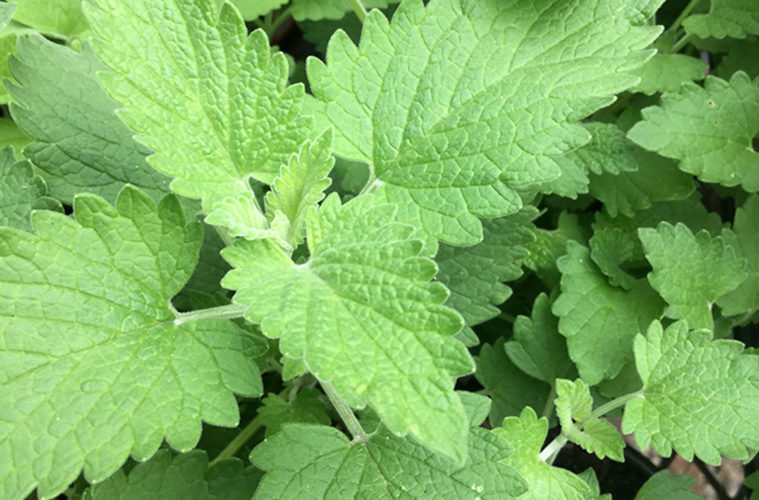Cats and dogs need a little grass in their diets especially if they don’t spend a lot of time outdoors. Grow these herbs in an accessible spot where your pets can help themselves.
More gardening for pets: Arthritic relief for older dogs
Catnip (Nepeta cataria)
Known as catnip or catmint, this member of the mint family has an almost magical effect on cats, causing them to roll in it, rub their faces in it and even chew it, while purring happily. The chemical compound called nepetalactone found in the leaves and stems is the reason for the attraction. However, kittens are not affected by it.

About catnip
Catnip makes a good groundcover and edging plant so plant it where it’s easily accessible to your cat. A perennial with aromatic grey leaves and spikes of mauve or white flowers, it’s evergreen and frost hardy.
Nepeta mussinii bears pretty blue-violet, edible flowers.
READ MORE: 3 Indigenous groundcovers to grow from cuttings
How to grow it
- Sow seeds directly in a moist, sunny position. It isn’t fussy about soil and doesn’t mind a little shade.
- Protect seedlings from cats as they can destroy them.
- Trim regularly to keep it in shape.
- Grow it from division or seed.
Pet grass (Dactylis glomerata)
Most dogs and cats are partial to munching on a little grass periodically. It aids digestion, provides fibre, minerals and vitamins, cleans the breath and helps cats with hairballs. Often when a dog or cat eats grass it will vomit, perpetuating the idea that the animal feels unwell or has a gastro-intestinal problem. But as eating grass hasn’t been linked to any disorder, some conclude that they simply enjoy it.

About pet grass
Easy to grow, pet grass makes an excellent groundcover. As lawns are often coated with chemical-based pesticides and fertilisers, which can be toxic, pet grass is a healthy alternative. It can also be grown in containers indoors and out, and to ensure a regular supply, plant it successively in more than one pot. Rabbits, birds and guinea pigs also love pet grass.
How to grow it
• Plant it full sun, although it tolerates some shade, in well-draining, evenly moist soil.
• In containers, keep roots relatively moist, and to reduce nutrient loss from excess water, make sure there are drainage holes in the bottom; place a tray under the container. Too much water can lead to rotting roots.
• To ensure it gets sufficient nutrients, plant in nutrient-rich soil and mulch with compost. Don’t use fertiliser.
• If leaves become a little tough, cut them down to 10cm to encourage new growth.
NOTE: The same dietary rules for humans also apply to pets: Everything in moderation!

